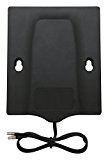Wi-Fi extender purchasing advice: how to choose the right product
- The most important facts in brief
- A WLAN repeater increases the range of the WLAN signal and eliminates annoying wireless gaps in your home.
- The connection between router and WLAN repeater is usually established simply by pressing a button using the WPS method.
- To avoid communication problems and for a smooth connection, router and repeater support the same WLAN standards and network protocols.
WLAN repeater – best reception throughout the house
According to a survey conducted by the statistics portal Statista in 2017, around 92 percent of respondents confirmed that they use WLAN in their own homes. However, not all consumers are completely satisfied with the signal strength and are looking for a way to improve reception. There are plenty of sources of interference: on the terrace, the Internet suddenly only works at a snail’s pace, and there’s even a dead zone in the attic – not good conditions for unadulterated surfing pleasure. The solution to these problems is a WLAN repeater.
Stronger signal thanks to WLAN repeater
In many German households, WLAN routers perform well and, in the best case, enable reliable Internet use throughout the house. However, it can happen that good reception is not guaranteed in all areas of the house. Concrete walls, for example, often prove to be interference factors, or only a tenth of the actual data rate arrives in the rear area of the house. In addition, it is very annoying when, for example, the cozy sitting area in the garden does not have a sufficiently strong WLAN signal.
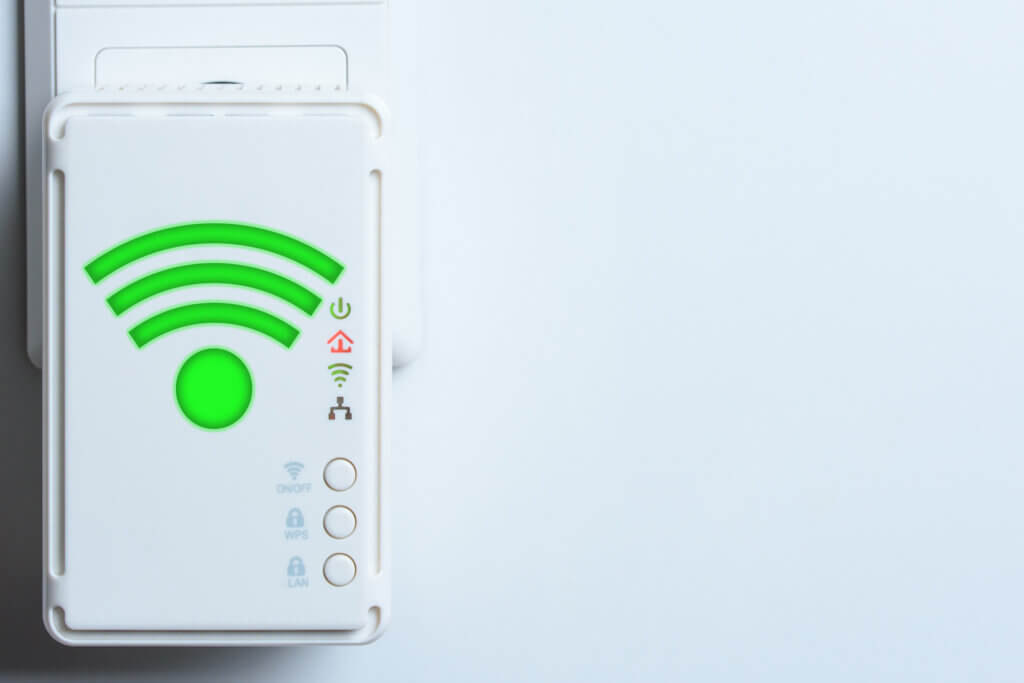
The handy and compact WLAN repeater, which significantly expands signal reception, provides a remedy here. It is simply plugged into the socket and provides a reliably strong WLAN signal within a short time. In the course of this, users can surf the Internet, stream movies and post on social networks throughout the house.
Great choice: Advantages and disadvantages of WLAN repeaters
Good WLAN (“Wireless Local Area Network”) throughout the house is essential for many people. The WLAN router radiates the signal in a spherical pattern. As the distance increases, the signal strength decreases. In addition, as the distance increases, the connection proves to be increasingly unstable and slow.
Since the WLAN repeater is supposed to amplify the WLAN signal, it is often referred to as a WLAN amplifier. However, this term is misleading, since the device only passes on the signal and does not amplify it in the true sense. In principle, the WLAN repeater acts more as a bridge between the router and the end device. There are various options for better reception; in addition to the WLAN repeater, innovative mesh systems and powerline adapters with WLAN are now also used.
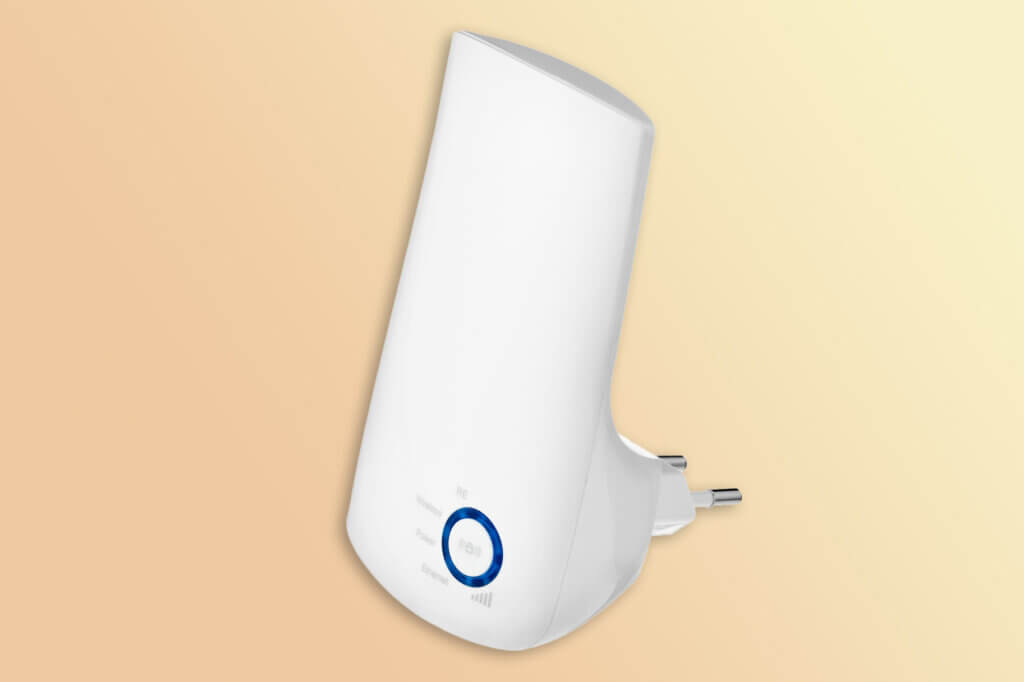
The classics
Handy WLAN repeaters have been available for some time now. They log into the existing wireless network and extend the range of the signal by amplifying the forwarding of the wireless signals. The repeaters have their own identifier (SSID). Since the speed is reduced by about half with each additional repeater, the simultaneous use of several repeaters is not very advisable. Classic WLAN repeaters are suitable for rented apartments and normal single-family homes where the signal is to be routed to a specific area.
Advantages
- Significant improvement in WLAN range
- Low power consumption
- Uncomplicated handling
- Generally compatible with all common routers
- Fewer additional devices required compared to the other variants
- Inexpensive to purchase
Disadvantages
- Interference from other repeaters possible
- Reduced bandwidth
- More repeaters mean slower internet
Powerline adapters
Powerline adapters are simply plugged into the wall socket. They use power lines to transmit the Internet signal and can bridge even larger distances without significant signal loss. At least two adapters are required to set up a powerline network: one is connected to the router via LAN cable and the second adapter is placed at a greater distance. The Homeplug AV or HomePlus AV2 standards are usually used. An existing powerline network can be expanded as required. They can be used in normal single-family homes without any problems. Powerline adapters are less suitable for an apartment in an apartment building because there are usually too many interference factors here and the speed suffers accordingly.
Advantages
- Bridging of larger distances
- Hardly any signal loss
- Easy installation
- Uncomplicated handling
- Network can be expanded as required
Disadvantages
- Interference from other devices using the same radio frequencies
- Sometimes interference of data transfer by other connected devices
- Higher costs
Innovative new development: Mesh system
Wi-Fi mesh systems were developed with the disadvantages of Wi-Fi repeaters in mind and are intended to provide better coverage. In addition to the router, other components are used here, such as several repeaters or powerline adapters. Some Wi-Fi routers can automatically route the Wi-Fi access data to the connected Wi-Fi mesh repeater. These systems have a decentralised structure, which means that all components also communicate with each other and not only with the router. Each component generates its own network so that there is comprehensive coverage with several access points. For this reason, mesh systems are the ideal solution for large flats and houses with many floors and larger living spaces.
Advantages
- Very high WLAN coverage
- Low losses in transmission rates
- Only one SSID (network identifier)
- Prioritisation of individual devices in the WLAN possible
Disadvantages
- High purchase price
- Higher energy consumption
- Usually only components from one manufacturer are compatible
This is what matters when buying
Basically, the repeater can only pass on the performance of the router. A good WLAN repeater alone is therefore not sufficient for faster Internet. If the router only offers a certain speed, this cannot be increased by the WLAN repeater – it only extends the range. The following factors in particular play an important role when buying a WLAN repeater:
- Standards and protocols: To avoid communication problems, the router and repeater must support the same network protocols and WLAN standards. It is advisable to choose devices from the same manufacturer.
- The frequency band: The WLAN repeater should be dual-band capable (frequencies: 2.4 and 5 gigahertz) to ensure maximum transmission speed. These models are often commercially available under the designation crossband repeater. It is also important here that the router also recognises the frequencies.
- The bridge function: An RJ45 socket enables devices such as a music system or a Smart TV to be connected directly to the repeater via a LAN cable. This transmission path is significantly more stable and faster. In some cases, several devices can also be connected via a switch.
- The DFS function: If the router and WLAN repeater support DFS technology (DFS, i.e. “Dynamic Frequency Selection”), it is possible to use all five gigahertz channels. This makes it possible to optimally avoid other devices and offer maximum speed.
- The antenna: Consumers can choose between models with an external or internal antenna. For the actual application, this choice is not relevant, as there are no significant differences here. For long ranges up to 200 metres, some repeaters can be equipped with a larger directional antenna. This variant is suitable for signal transmission between two buildings, for example.
- The socket: Smaller WLAN repeaters are often equipped with an integrated power supply. They are simply plugged into the socket and are usually cheaper than repeaters with an external power supply. However, the latter have the advantage that they can be used much more flexibly. For example, if the socket is behind a piece of furniture, the repeater can still be placed anywhere.
Setting up the WLAN repeater optimally
After purchasing the new WLAN repeater, it is time to set it up, which is basically very uncomplicated. As a rule, the procedure is identical regardless of the manufacturer. Nevertheless, it is advisable to read the instructions in the user manual beforehand.
Connecting the router and WLAN repeater
The router and WLAN repeater are usually connected using the WPS method. Almost all modern devices now support this connection method. Users simply press the corresponding buttons on both devices and the repeater automatically adopts the router settings in the course of the connection.
WPS aka “Wi-Fi Protected Setup”
This is a practical function that establishes a connection between two WLAN-enabled devices at the touch of a button. Users do not have to enter a password in the configuration menu, which makes the setup process much easier.
The alternative: connection via LAN cable
Alternatively, if you want to connect via the manufacturer’s setup page, you can connect the repeater to a PC or tablet via LAN cable. After calling up the corresponding page in the browser, users select the relevant WLAN network. To complete the setup, the router password must be entered.
Eliminating problems during set-up
Occasionally, problems can occur when setting up the WLAN repeater. This may be due to the security settings of the router. In most cases, the problem can be solved by selecting the WLAN repeater in the router’s device list and establishing a connection. Connecting the repeater and the router usually solves the problem. Users can then make the appropriate settings.
Signal strength
The repeater shows how well the signal is amplified by means of an LED display. A sufficient effect is guaranteed when at least two LEDs or LED bars light up.
The security standard
Most WLAN repeaters use the security standard WPA or WPA2. Communication between the two devices can only take place if the appropriate security standard is also selected on the router.
Selecting the optimal location
The correct location of the WLAN repeater is important for a high range of the WLAN signal. If possible, it should be placed in the middle of the distance between the router and the end device or in a peripheral area in a place where the signal is still strong enough. If necessary, you can check how good the reception is at certain points with a WLAN-capable device using software.
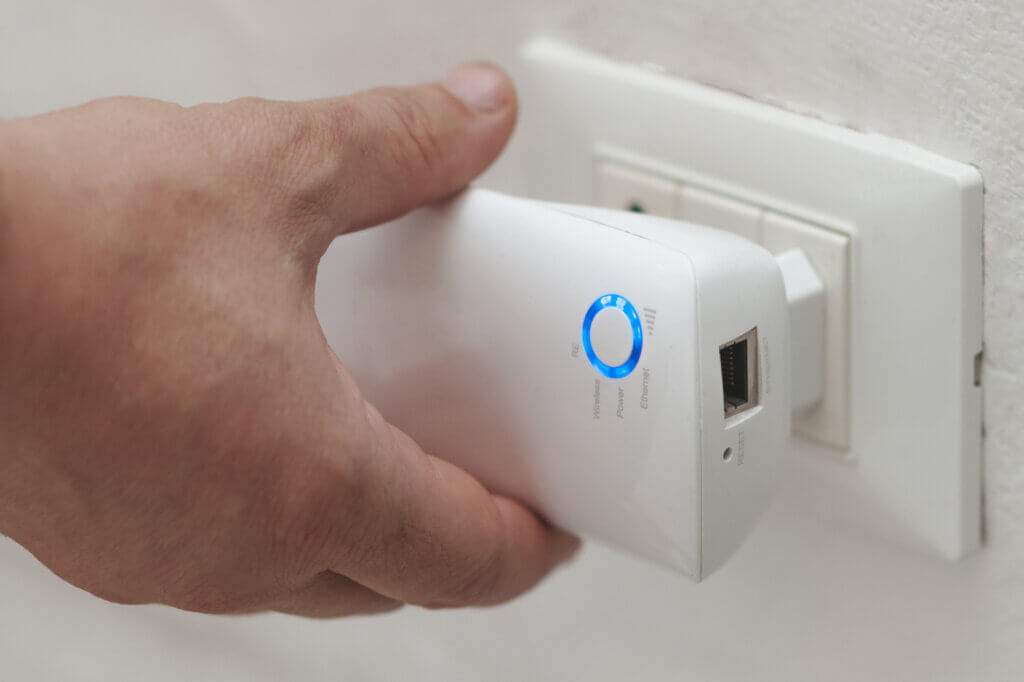
Optimum reception is usually guaranteed if the distance between the router and the WLAN repeater is not too great and both devices are within sight of each other. If the distance between the devices is too great, the repeater cannot receive a sufficiently strong signal, which is why it does not provide efficient forwarding.
Identifying sources of interference
It can happen that despite choosing the supposedly optimal location, no connection is possible between the router and the WLAN repeater. Metal doors and thick concrete walls can be major sources of interference. If there are large metal household appliances such as microwaves or refrigerators in the direct vicinity of the router or repeater or between the appliances, the radio signal may also be disturbed.
In case of doubt, the optimal location can always be found by trying out different possibilities. To do this, users simply position the WLAN repeater at different locations in the beginning. In this way, they can easily determine the optimal location after some time. Depending on the performance of the router and WLAN repeater, a range of up to 100 metres can be achieved at the optimal location.
Using WLAN repeaters and amplifying the WLAN signal
As the tips on setting up and recognising possible interference factors show, the sole use of a WLAN repeater is not yet sufficient to ensure an optimally amplified WLAN signal. The following checklist is helpful:
- Find the optimal router location
- Replace an older router with a new model.
- Update the router firmware
- Eliminate potential sources of interference
- Set the maximum signal strength
- Select the correct WLAN standard
- Use of the five gigahertz frequency band

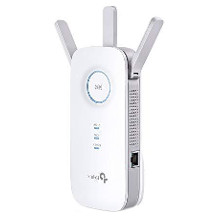
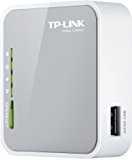
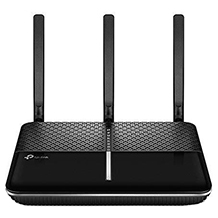
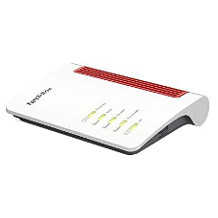
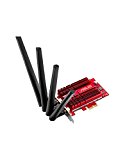
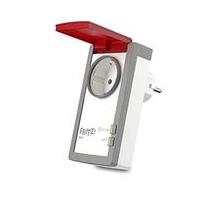
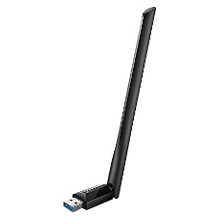
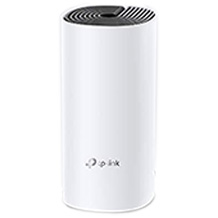
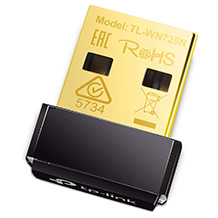

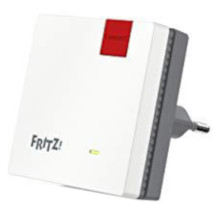
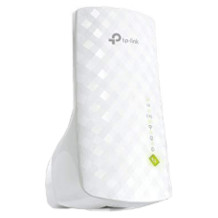
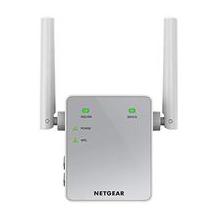
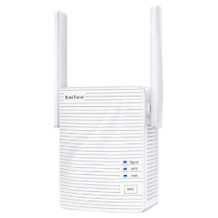
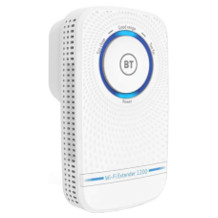
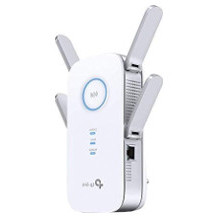
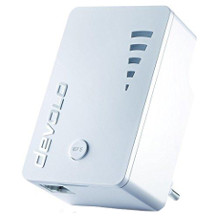
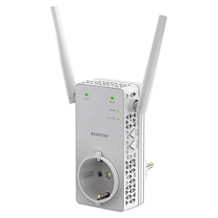
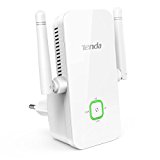
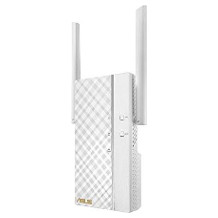

 5,267 reviews
5,267 reviews


